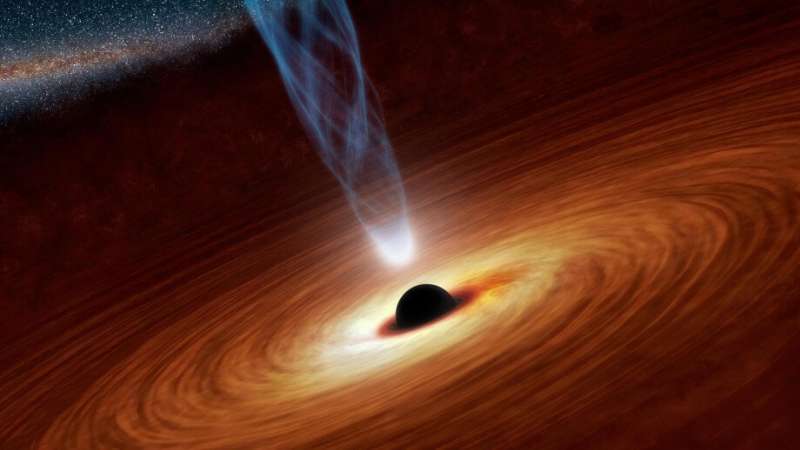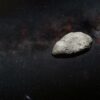The hunt for gravitational waves, ripples in space and time caused by major cosmic cataclysms, could help solve one of the Universe’s other burning mysteries—boson clouds and whether they are a leading contender for dark matter.
Researchers are using powerful instruments, like the advanced Laser Interferometer Gravitational-Wave Observatory (LIGO), advanced Virgo, and KAGRA, that detect gravitational waves up to billions of light years away to locate potential boson clouds.
Boson clouds, made up of ultralight subatomic particles that are almost impossible to detect, have been suggested as a possible source of dark matter—which accounts for about 85 percent of all matter in the Universe.
Now a major new international study carried out in the LIGO-Virgo-KAGRA collaboration and co-led by researchers from The Australian National University (ANU), offers one of the best leads yet to hunt down these subatomic particles by searching for gravitational waves caused by boson clouds circling black holes.
Dr. Lilli Sun, from the ANU Centre for Gravitational Astrophysics, said the study was the first all-sky survey in the world tailored to look for predicted gravitational waves coming from possible boson clouds near rapidly spinning black holes.
“It is almost impossible to detect these ultralight boson particles on Earth,” Dr. Sun said.
“The particles, if they exist, have extremely small mass and rarely interact with other matter—which is one of the key properties that dark matter seems to have. Dark matter is material that cannot be seen directly, but we know that dark matter exists because of the effect it has on objects that we can observe.
“But by searching for gravitational waves emitted by these clouds we may be able to track down these elusive boson particles and possibly crack the code of dark matter. Our searches could also allow us to rule out certain ultralight boson particles that our theories say could exist but actually don’t.”
Dr. Sun, also an Associate Investigator at the ARC Centre of Excellence for Gravitational Wave Discovery (OzGrav), said gravitational wave detectors allowed researchers to examine the energy of rapidly rotating black holes extracted by such clouds if they exist.

Artist’s impression of a black hole. © NASA
“We believe these black holes trap a huge number of boson particles in their powerful gravity field, creating a cloud corotating with them. This delicate dance continues for millions of years and keeps generating gravitational waves that hurtle through space,” she said.
While the researchers haven’t yet detected gravitational waves from boson clouds, Dr. Sun said gravitational wave science had “opened doors that were previously locked to scientists.”
“Gravitational-wave discoveries not only provide information about mysterious compact objects in the Universe, like black holes and neutron stars, they also allow us to look for new particles and dark matter,” she said.
“Future gravitational wave detectors will certainly open more possibilities. We will be able to reach deeper into the Universe and discover more insights about these particles.
“For example, the discovery of boson clouds using gravitational wave detectors would bring important insights about dark matter and help advance other searches for dark matter. It would also advance our understanding of particle physics more broadly.”
In another significant breakthrough, the study also shed more light on the chance of boson clouds existing in our own galaxy by taking into consideration their ages.
Dr. Sun said the strength of any gravitational wave depends on the age of the cloud, with older ones sending out weaker signals.
“The boson cloud shrinks as it loses energy by sending out gravitational waves,” Dr. Sun said.
“We learned that a particular type of boson cloud younger than 1,000 years is not likely to exist anywhere in our galaxy, while clouds that are up to 10 million years old are not likely to exist within about 3,260 light years from Earth.”
More information:
All-sky search for gravitational wave emission from scalar boson clouds around spinning black holes in LIGO O3 data. arXiv:2111.15507v1 [astro-ph.HE], arxiv.org/abs/2111.15507
Provided by
Australian National University
Citation:
Mysterious clouds could offer new clues on dark matter (2021, December 1)



